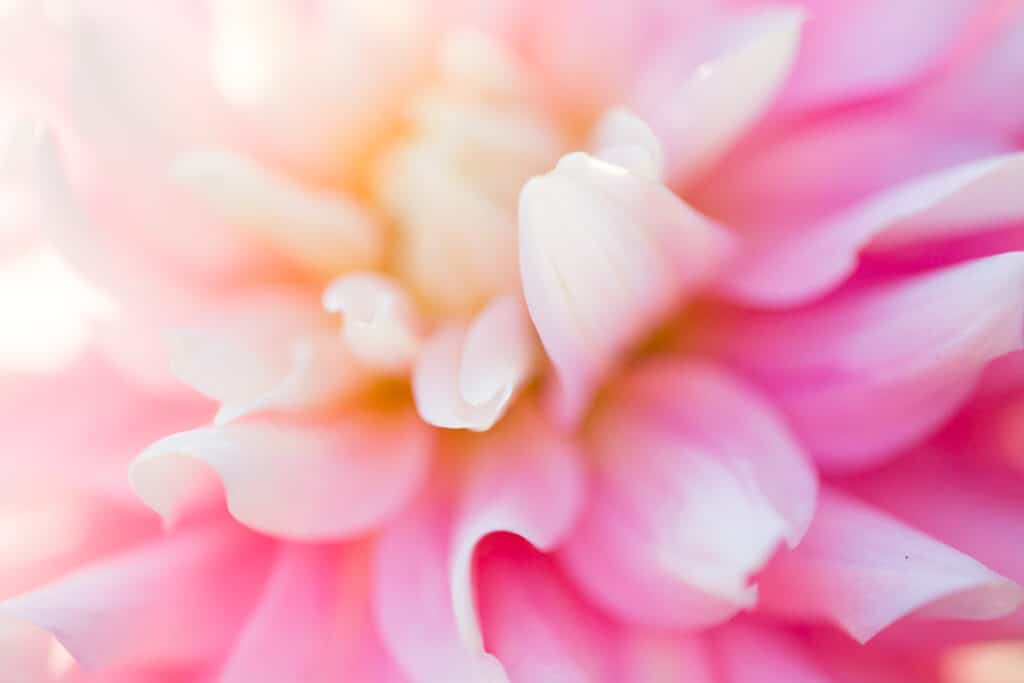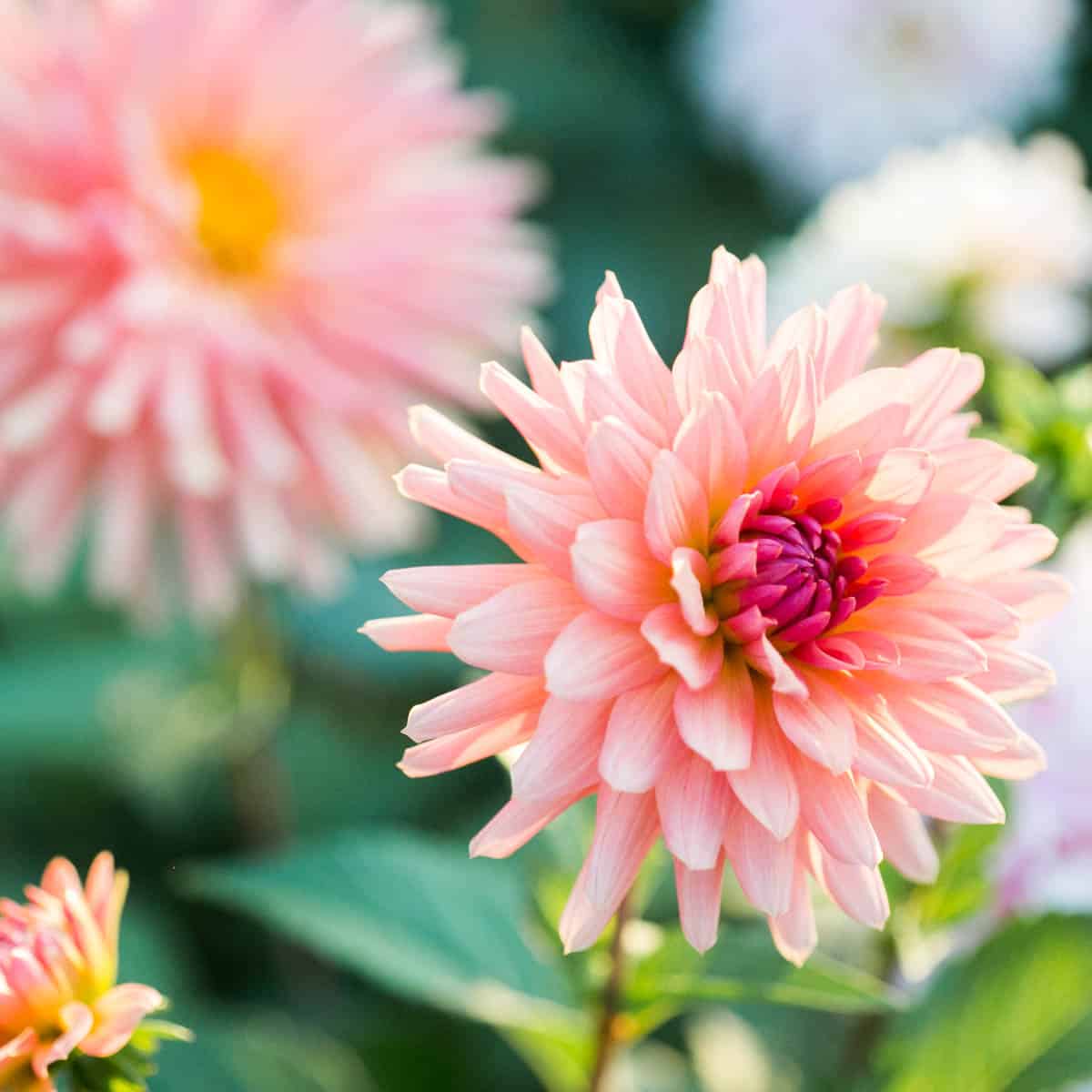Are Dahlias Annual Or Perennial? And How To Overwinter
Are dahlias annual or perennial? The answer depends on what climate you live in!
Dahlias are vibrant flowers that come in many beautiful colors and unique flower forms. They are a stunning flower that bloom prolifically into late fall when deadheaded properly (read our guide to pruning for blooms here!).

Generous and flamboyant, dahlias are a florist favorite and a powerhouse for cutting gardens, yielding lots of flowers every season.
Dahlia growers all over the US enjoy these gorgeous flowers every season.
If you are new to growing dahlias, you may be wondering if they are an annual or a perennial.
The answer is nuanced: they can be either, depending on the climate and winter temperatures.
Join us today as we explore how dahlias act as annuals or perennials depending on the zone they are in. We’ll also discuss what you can do to help your dahlia tuber thrive… and even act like a perennial!

Dahlia flowers not blooming? Learn how to fix it here!
Are Dahlias A Perennial? The Short Answer
Dahlias act as a perennial in zones that have a milder winter: zones 8-10. They are treated as an annual in zones 1-7. Because they survive as a perennial only in specific zones, they are considered a tender perennial.
Dahlias Are Tender Perennials
A tender perennial means that the plant is not frost hardy. The plant can grow as a perennial if they are protected from frosts or grown in a very warm climate. Tender perennials need help to survive zones with cold winters.
You can see what growing zone you live in here by checking your usda plant hardiness zone.
If you want to find a dahlia acting like a perennial in her native habitat, you’d travel to Central America.
Being heat loving tropical plants, dahlias originally hail from areas such as Mexico and Guatemala, where they bask in the mountain heat and spring to life each year with colorful blooms. There are many varieties of dahlias, but all are sun loving!
They enjoy warm climates and full sun and produce the most blooms in late summer and early fall.
Read our complete guide to growing dahlias right here!

How Climate Affects Dahlia Lifespan
Originating from just 35 species, dahlias are a perennial bloomer in the ideal climate.
If you live in a location that has a moderate climate, you’ll be able to easily grow dahlias as a perennial. (Though you may need to mulch the ground to ensure the survival of your dahlia tuber during winter months.)
Dahlias can be grown in the ground as perennials in USDA hardiness zone 8-10.
When cooler weather occurs, the plant will die back, but the tuber will remain healthy in the ground and ready to grow again when temperatures warm up the following year.
When successfully over wintered, you will see new growth sprouting from the ground the following spring.
If you are growing dahlias in colder climates however, cold temperatures and snow will kill the dahlia tuber in the ground, making your dahlia an annual.
Continue reading to learn how to care for dahlias in your specific zone.

Overwintering Dahlias By Mulching
If you live in zone 10 or above, you are in luck… your dahlia plant will need no special care to winter over. Dahlias in zone 10 are blessed with just the right climate to thrive.
In zones 8 and 9, you will need to take special care to ensure your dahlias come back, taking steps to overwinter your dahlias in the ground.
First, cut back your plant back after the first frost. Then mulch heavily. The mulch will protect the dahlia tubers until the next spring.

How to Mulch Dahlias Over Winter
Mulching dahlia plants is very simple. Wait until the foliage of the dahlia plant dies back after the first frost in fall. Once this happens, trim your dahlia foliage back to within a couple of inches of the soil surface.
Next, you can add a thick layer of mulch on top of the dahlia tuber to protect the plant.
A heavy mulch is needed to protect the dahlia plant. This gives a layer of protection between the fleshy tuber from which the dahlia sprouts, and the cold winter frost.
You can use wood chips, peat moss, pine needles, or straw. Layer the mulch at least 4 inches thick to protect the dahlia tuber.

A Note From Our Readers: Vicky is an avid dahlia gardener living in zone 8 of Southwest Washington and says; “I have mulched my dahlia plants for years with a thick layer of wood chips. Usually, my dahlias come back. But we do have the occasional hard winter where I lose a few dahlias. Since I love them, I just keep buying and planting more!”
Overwintering Dahlias In Pots
Shorter varieties of dahlia can be grown in pots and are easily over wintered. Give your potted dahlias winter protection by cutting back the plant and bringing inside to a sheltered location.
You will need a cool frost-free place like a garage or storage shed. Set your container out in late spring or early summer after all threat of frost has passed.
We do not recommend pots and containers for tall varieties.
Get our complete guide to fertilizing dahlias here.
Overwintering Dahlia Tubers
In zones 7 and below, dahlia flowers do not survive winter in the ground. In these zones, a dahlia plant can either be grown as an annual, or the tuber can be removed from the ground and replanted.
If you choose to dig up the dahlia tuber, you will essentially be preserving and re planting it, making it a perennial with a little elbow grease.

A dahlia has tuberous roots that store it’s energy and gather the plants nutrients. The tuber resides beneath the dark soil of the dahlia plant.
This tuber stores the energy the plant needs every year to grow, thrive, and create a root system. Unfortunately, the dahlia tuber is just not cut out to survive cold winters.
In zones 7 and below, dahlia tubers must be gently removed from the ground and stored for winter.
Digging Up Dahlia Tubers For Winter Storage:
- Label your dahlia plants well before frost hits so that you know what tuber you are pulling out of the ground. Include the dahlia varieties and name. Place your label down near the bottom of the plant so that it is not lost when cutting back. Trust us on this one!
- Once the first frost hits, cut your dahlia back to the ground, leaving 3 to 4 inches of plant in tact. You will want to do this when you are ready to dig up your dahlia tubers.
- Gently dig up the root ball which contains your tuber. To avoid breaking your tuber use a pitch fork instead of a shovel, and gently loosen the soil all around the tuber. Avoid damaging the dahlia tuber as cuts and breaks can make the susceptible to rot.
- Leave your dahlia tuber encased in dirt, and let air dry for a few days.
- Store the dahlia tubers in cardboard boxes or a dry paper bag that is well ventilated and contains peat moss or growing mix. Overwinter them in a cool, dry place, such as a basement. The goal is to keep the tubers from getting moisture laden and rotting, or from getting dried out. Check on tubers regularly to ensure health.
- Keeping moisture away from your dahlia tubers is of utmost importance. Some people recommend a cardboard box, while others use plastic bags for storage. The most important thing is to keep moisture out of the tubers so the can survive until planting time.
Overwintering dahlia tubers can be tricky, so go slow and regularly check on your tubers.
It may take some time to get the hang of preserving your dahlias year after year, but doing so can allow you to preserve and re plant your favorite dahlia plants!

Growing Tips
Home gardeners can use these tips for taking care of their tender dahlia plants:
- Dahlias love sun! Make sure to choose a sunny location for our dahlia plant. Sunlight is essential for new flowers to form. For best results, plant dahlia flowers in an area that gets at least 6 hours of sun.
- Dahlias need well-drained soil to thrive. Before planting new plants or tubers, amend the soil if needed for added drainage. Heavy clay soil can cause dahlia tubers to rot. Dahlias enjoy rich soil, so feel free to amend it with organic matter (which also helps with drainage!). Get our guide to the best soil for dahlias here!
- If you are a new flower gardener, consider buying plants in late spring your first year of growing dahlias. They are widely available at garden centers and will give you a head start on your dahlia blooms. Do not plant dahlias until all danger of frost has passed.
- For a bushier plant, pinch out the center for your dahlia plant between two sets of leaves when the plant is young. This give you a fuller plant and more flower buds to enjoy.

Will Dahlias Come Back Every Year?
In summary…
Dahlias are a delightful flower with beautiful blooms that thrive in warm weather and are weary of frosts. Because of this, they only act as perennial plants in zones 8 and above.
If you live in the right climate, dahlias can be one of the best plants to brighten up your flower gardens and produce blooms. A single growing season can yield hundreds of flowers from just one plant.
Zones 8 and 9 require thick mulching to keep dahlia tubers alive. Zones 7 and below require a little work in digging up and overwintering dahlia tubers in a cool, dry place. Dahlias are a generous plant with amazing blooms, so we think the extra work is worth the effort!
Happy planting and good luck with your dahlia flowers!






